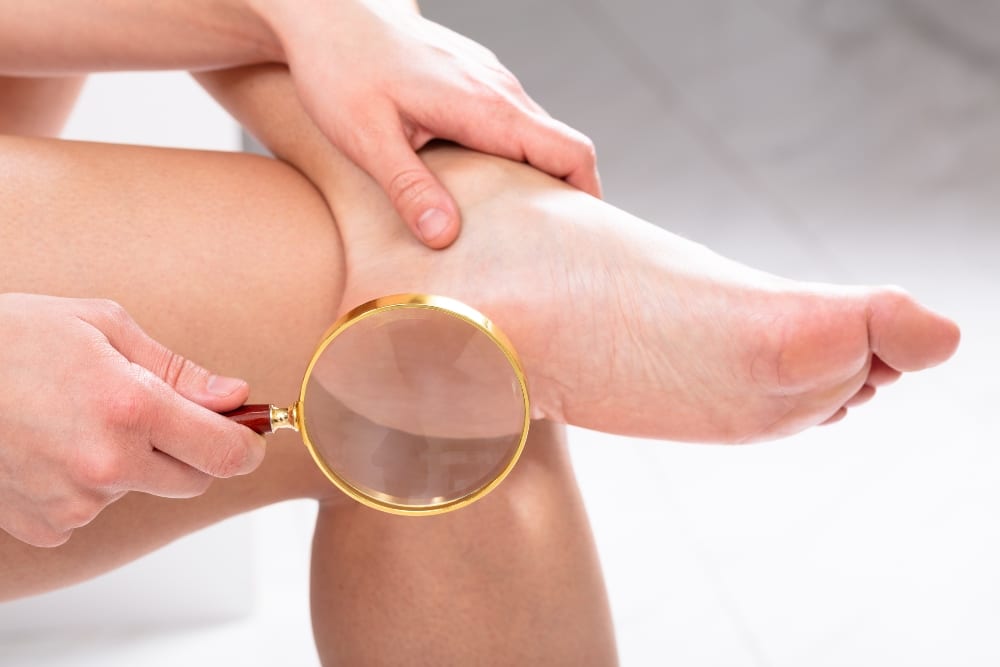Diabetic wound care is never something that should be treated as “standard procedure.” Every patient in need of any such care should receive it promptly, thoroughly, and in the most careful regard. How well wound care is performed can mark the entire difference between a healthy recovery and developing dire complications.
Furthermore, any patients at risk for diabetic wounds should be receiving plenty of attention before any wounds develop, if possible. The best care we can provide for any wound is to have kept it from ever happening in the first place.
That is why, when it comes to diabetic wound care, there are three goals we follow to the best of our ability.
Care for Wounds Quickly
The unfortunate truth for many diabetic wounds is that their discovery is not immediate. They could have already existed for some time before they were ever noticed.
The consequences of diabetes are largely to blame for this. As the disease damages a patient’s circulatory system and nerve health over time, injuries become much more difficult to detect. Sensations within the feet can become lost altogether, and restricted blood flow can greatly slow the healing rate of wounds or stop it altogether without medical intervention.
So, when a diabetic wound is discovered, fast action can be essential to ensuring the prevention of future complications. We may not always know how long a wound has existed, and we certainly don’t want to keep treatment waiting any longer than we need to! We will make treatment a priority and get a patient in as soon as possible.
Patients can also help shorten their overall time to treatment by checking their feet daily for signs of wounds and other potential troubles. The sooner a problem is detected, the sooner it can be addressed if needed.

Care for Wounds Effectively
When treating diabetic wounds, it is vitally important that we fulfill as many needs as possible to promote thorough healing. These can (and often) include:
- Debriding the wound (i.e., removing dead skin and other debris)
- Disinfecting the wound
- Taking the pressure of the area that could be contributing to keeping the wound open (also known as off-loading)
- Aiding healing and recovery time in any way possible, as closing the wound means closing off an avenue toward infection
- Further reducing the risks of infection in any way possible
We will always take the time to fully assess any wound and determine the optimal course of treatment. Our office is equipped with many effective traditional methods of wound treatment. Debriding tools, dressings, and medications can immediately address the cleaning and disinfecting of a wound, while equipment such as braces, splints, and orthotics will help offload pressure from the area to improve the recovery rate.
We might also recommend more advanced methods of aiding wound recovery, such as our Multiwave Locked System (MLS) laser therapy. This form of treatment can stimulate and aid the body’s natural healing responses, providing a needed boost in closing a wound without introducing further foreign elements. Only light energy is involved, and it involves no burning or other tissue damage.
Care for Wound Risk Patients Proactively
We will always strive to take care of diabetic wounds as promptly and thoroughly as possible, but the best way we can benefit our patients with diabetic risks is to help them avoid wounds and their complications, to begin with.
Waiting until a problem happens before ever taking action to address its potential consequences can be a dangerous position in many cases, but even more so when it comes to diabetic wounds. Every wound is a risk, and every step taken to help prevent or lessen the severity of a wound is well worth taking.
Fortunately, it does not always need to take a lot to significantly reduce your risk of diabetic wounds. There are many simple and common-sense steps one can take.
We have already mentioned daily self-examinations of your feet, and that is arguably the best thing you can do to protect yourself. Other actions include:
- Switching to socks and shoes that better accommodate the supportive needs of your feet and reduces the chances of friction irritating your skin. Specially-made diabetic footwear might be recommended for these purposes.
- Keeping your common walkways free from clutter, loose cords, table legs, and other potential hazards that can damage your feet and toes. Making sure you have stable handrails where you might need them most can help as well.
- Remaining safely active to aid your circulation and general health.
- Diligently managing your blood sugar levels and other recommended steps for diabetic treatment. This will help slow the progression of complications, including nerve damage and restricted circulation.
While there is much you can do on your own, having the guidance of a professional remains essential. Through scheduled diabetic foot care check-ups, we can effectively follow your history and tag potential issues that may need addressing before they have a chance to turn into real problems.
Long-term treatments we can provide, such as custom orthotics and specialized footwear, may also greatly reduce the risk of wounds by eliminating spots of high pressure or friction in the foot. We will only recommend them if necessary.

A Brighter Future with Fewer Diabetic Wounds
Whether you have a wound in need of immediate treatment or not, we want to ensure that your future is filled with much less risk of a small cut turning into a huge, dangerous ulcer. As part of a team of diabetic care experts, we can help you maintain mobility and keep doing the things you love. That’s our goal with every patient!
Schedule an appointment or consultation by giving us a call or by filling out our online contact form.
